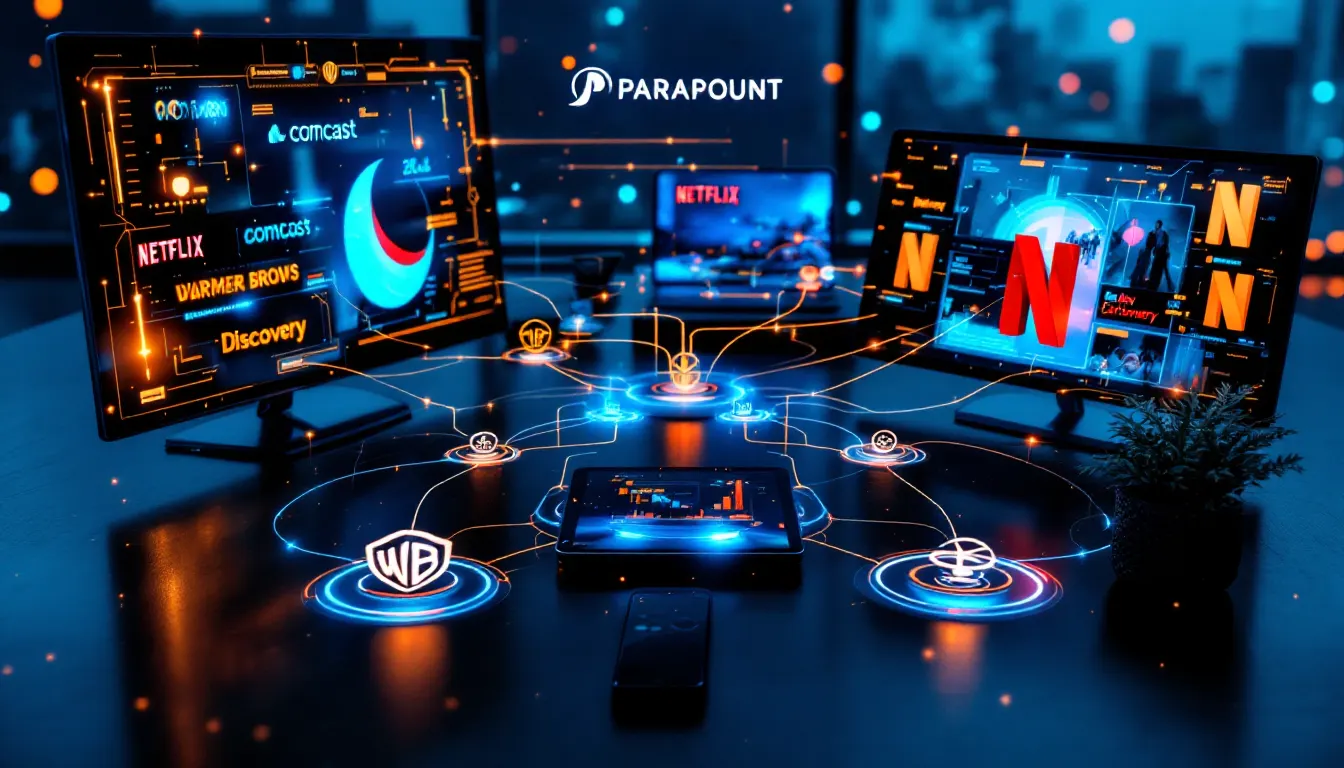Why Paramount, Comcast, Netflix Bid for Warner Bros Discovery

Paramount, Comcast, and Netflix submitted bids for Warner Bros Discovery in late 2025, signaling a shakeup in US media consolidation.
This competitive bidding race isn’t just about content libraries but about controlling distribution systems that generate lasting leverage.
The real mechanism is shifting from selling shows to owning scalable streaming architectures and cross-platform ecosystems.
In media, controlling the system drives returns beyond just the content it carries.
Why This Isn’t Just Another Mega-Merger
Wall Street and pundits frame mega-mergers as cost-cutting or scale plays. That misses the constraint shift: from content spending to platform dominance.
Unlike legacy conglomerates that chase scale mainly to trim budgets, Paramount and Comcast leverage bid for Warner Bros Discovery to reposition control over end-to-end streaming systems.
This echoes how process improvements unlock compound advantages—ownership shifts from a cost center to an innovation-driven leverage point.
How Ownership of Warner Bros Discovery Creates System Leverage
Warner Bros Discovery controls vast content assets, but more crucially, streaming tech stack and subscriber network.
Netflix already mastered platform leverage via personalized AI recommendations and global distribution scale. Paramount and Comcast aim to close that gap by absorbing valuable streaming technology and user bases.
Unlike smaller streamers who pay $8-15 per subscriber acquisition on ads, a combined Warner system transforms new users into built-in distribution engines—dropping acquisition to near zero.
This mechanism replicates scalable digital marketing programs that turn infrastructure into an advantage without extra spend.
Why Controlling Streaming Ecosystems Beats Content Alone
While content libraries depreciate and require constant refresh, owning streaming platforms builds intangible assets—subscriber data, recommendation algorithms, and device integration.
Comcast, known for cable, sees streaming as a leverage hinge to transition from legacy distribution to systemic digital revenue.
Netflix bidding here reveals its shift from content purchaser to a platform aggregator, increasing switching costs and user lock-in.
This contrasts with companies like Disney+, which rely heavily on content renewals and marketing spend.
Owning the system changes the core constraint from content acquisition costs to platform innovation velocity.
What This Means for Media Operators and Investors
The constraint has shifted from content libraries to platform control. Companies that win control over streaming infrastructure gain compounding advantage without constant reinvestment in content acquisition.
Operators should focus on system ownership and subscriber network effects, not just content procurement.
Future bidders from outside the US market should watch this playbook; acquiring system-level assets boosts long-term leverage far beyond traditional mergers.
**In media, platform control outvalues content—changing how growth is won.**
Related Tools & Resources
As media companies shift their focus from content alone to platform and subscriber engagement, marketing automation tools like Brevo become crucial for driving scalable communication and personalization. For businesses aiming to leverage streaming subscriber networks and reduce acquisition costs, Brevo offers powerful email and SMS automation to enhance customer retention and streamline digital marketing efforts. Learn more about Brevo →
Full Transparency: Some links in this article are affiliate partnerships. If you find value in the tools we recommend and decide to try them, we may earn a commission at no extra cost to you. We only recommend tools that align with the strategic thinking we share here. Think of it as supporting independent business analysis while discovering leverage in your own operations.
Frequently Asked Questions
Why are Paramount, Comcast, and Netflix bidding for Warner Bros Discovery?
They are bidding to gain control over Warner Bros Discovery's streaming technology, subscriber network, and scalable streaming architecture, which offers lasting leverage beyond just content libraries.
How does owning streaming platforms create advantage over just owning content?
Owning streaming platforms builds intangible assets like subscriber data, recommendation algorithms, and device integration, increasing switching costs and user lock-in compared to owning content libraries that depreciate and require constant renewal.
What are the cost benefits of owning streaming ecosystems versus content acquisition?
Owning the streaming system can drop subscriber acquisition costs to near zero by transforming new users into built-in distribution engines, unlike smaller streamers paying $8-15 per subscriber acquisition on ads.
How have companies like Netflix mastered platform leverage?
Netflix leverages personalized AI recommendations and global distribution scale to maximize platform advantage, shifting from content purchaser to a platform aggregator.
How is the media consolidation trend shifting in 2025?
The trend is shifting from mega-mergers for cost-cutting or scale to bids focused on platform dominance and owning end-to-end streaming systems for compounding advantage.
Why should media operators focus on system ownership and subscriber networks?
Focusing on system ownership and network effects enables operators to gain compounding advantage without continual reinvestment in costly content acquisition.
What role do marketing automation tools like Brevo play in streaming business leverage?
Brevo’s email and SMS automation enhances customer retention and streamlines scalable communication, which helps leverage subscriber networks and reduce acquisition costs.
How does Comcast view its streaming business in its transition?
Comcast sees streaming as a leverage hinge to move from legacy cable distribution to systemic digital revenue through control over streaming ecosystems.

